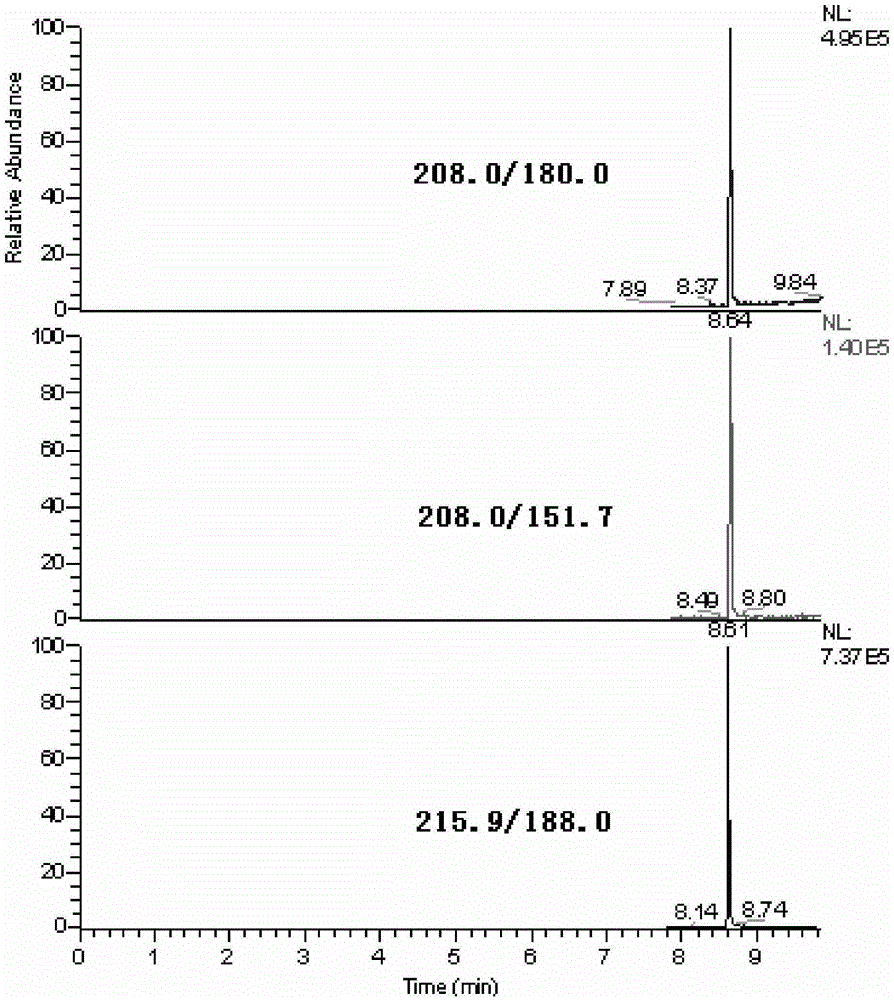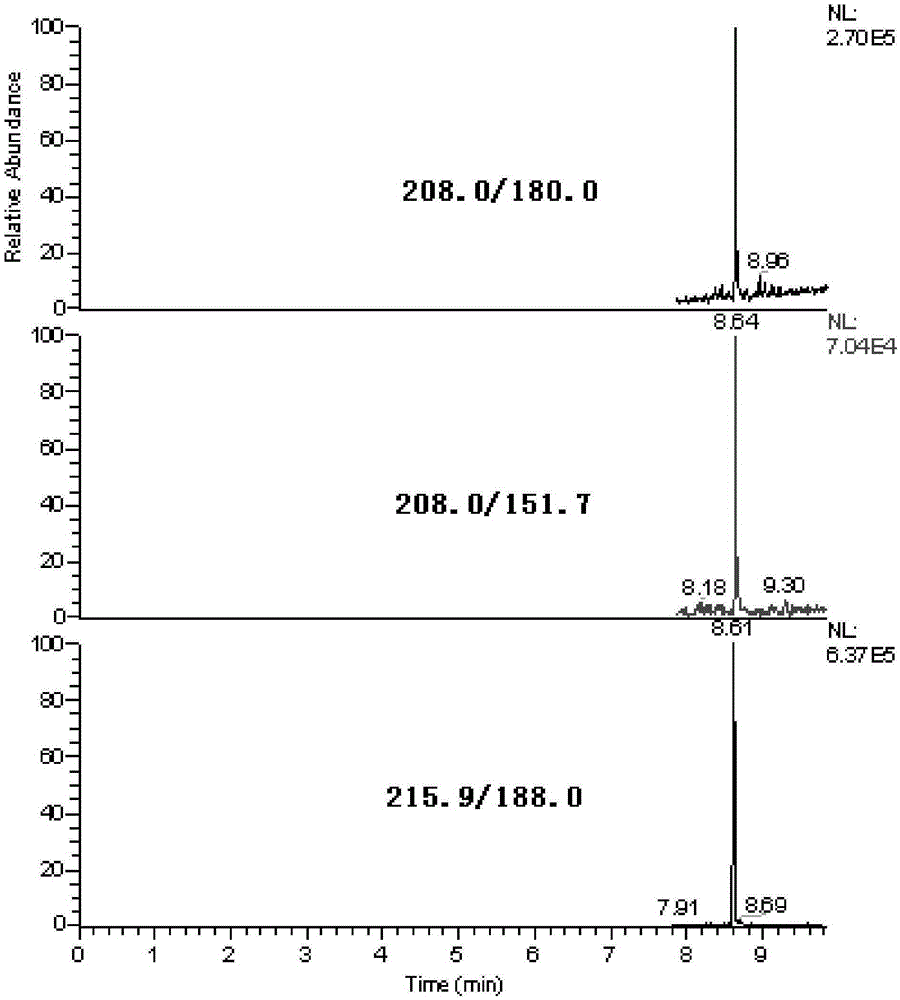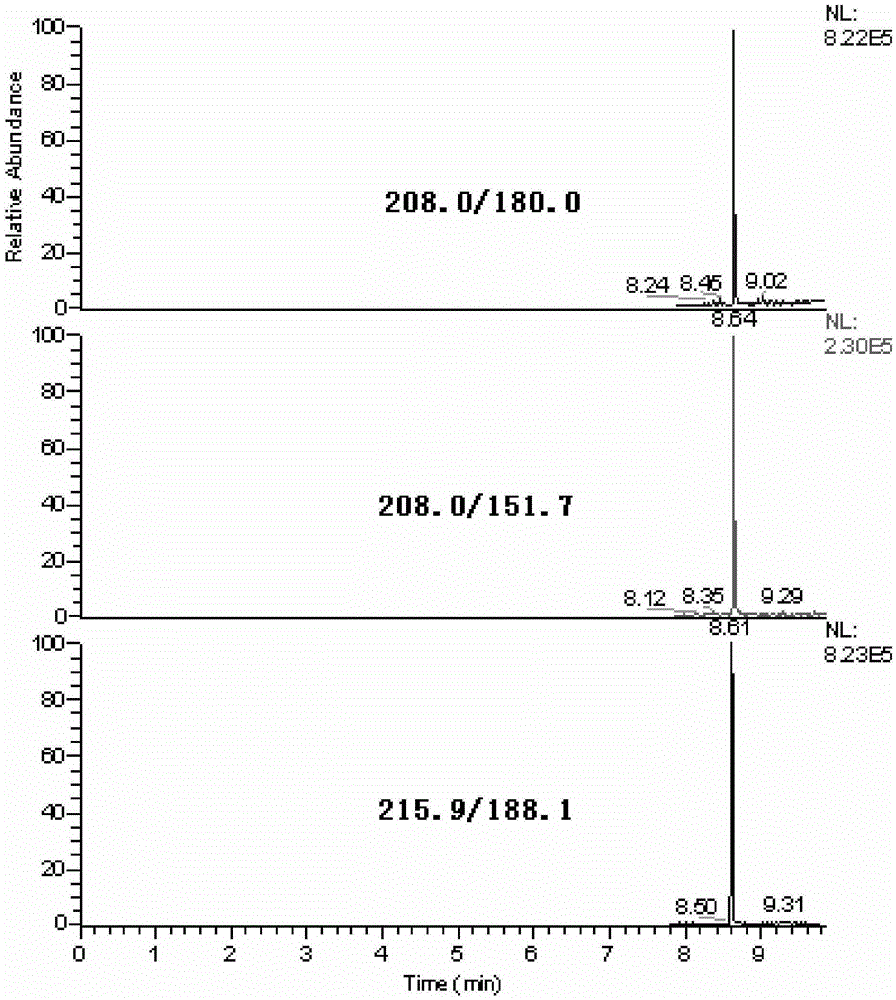Method for measuring residual amount of anthraquinone in tea with gas chromatography-mass spectrum/mass spectrum method
A technique of gas chromatography and mass spectrometry, which is applied in the field of determining the residual amount of pollutants in tea, and achieves the effect of simple method
- Summary
- Abstract
- Description
- Claims
- Application Information
AI Technical Summary
Problems solved by technology
Method used
Image
Examples
Embodiment Construction
[0055] 1. Reagents and materials
[0056] 1.1 n-Hexane: chromatographically pure.
[0057] 1.2 Acetone: chromatographically pure.
[0058] 1.3 Diethyl ether: chromatographically pure.
[0059] 1.4 Sodium chloride: analytically pure, ignited at 650°C for 4 hours, cooled to room temperature in a desiccator, and stored in a sealed bottle for later use.
[0060] 1.5 Anhydrous sodium sulfate: analytically pure, ignited at 650°C for 4 hours, cooled to room temperature in a desiccator, and stored in a sealed bottle for later use.
[0061] 1.6 Anthraquinone, anthraquinone-D8 standard substance (Anthraquinone,, CAS: 84-65-1, C14H8O2; Anthraquinone-D8,, CAS: 10439-39-1): purity greater than or equal to 99%.
[0062] 1.7 Standard stock solution: Accurately weigh an appropriate amount of standard substance (1.6), prepare a 0.4mg / mL standard stock solution with acetone, and store it in a refrigerator at 0°C to 4°C in the dark, with a validity period of 6 months.
[0063] 1.8 Anthraquin...
PUM
| Property | Measurement | Unit |
|---|---|---|
| particle size | aaaaa | aaaaa |
Abstract
Description
Claims
Application Information
 Login to View More
Login to View More - R&D
- Intellectual Property
- Life Sciences
- Materials
- Tech Scout
- Unparalleled Data Quality
- Higher Quality Content
- 60% Fewer Hallucinations
Browse by: Latest US Patents, China's latest patents, Technical Efficacy Thesaurus, Application Domain, Technology Topic, Popular Technical Reports.
© 2025 PatSnap. All rights reserved.Legal|Privacy policy|Modern Slavery Act Transparency Statement|Sitemap|About US| Contact US: help@patsnap.com



